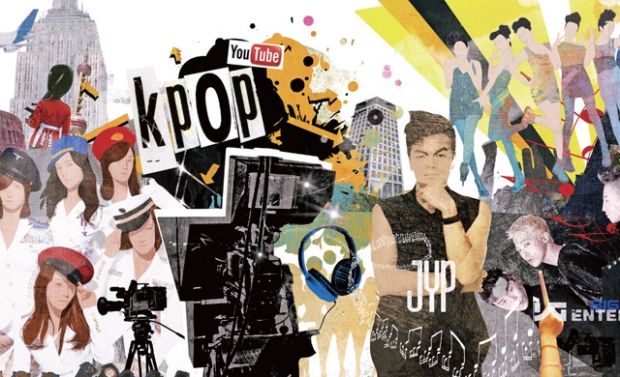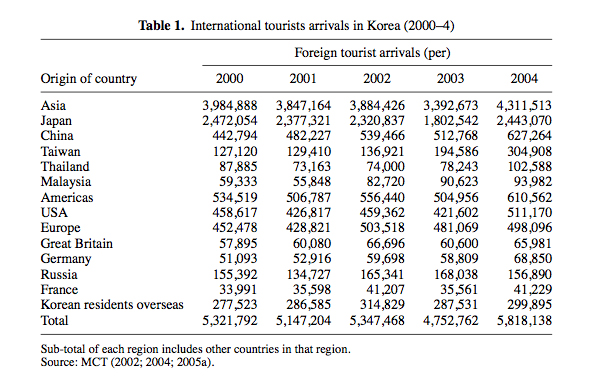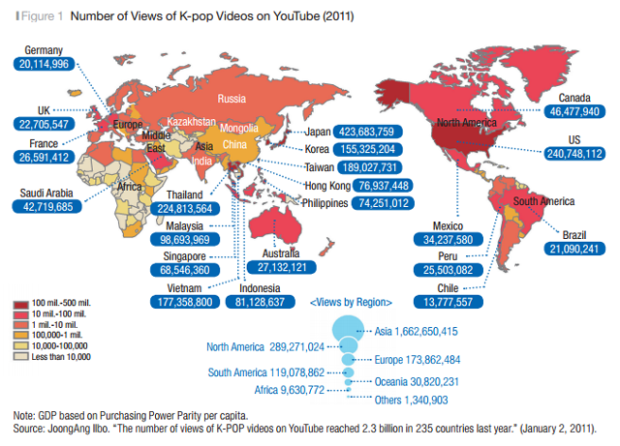Appearance in Korean culture is important, especially in media. While some think of it as shocking, most of people consider it to be no big deal. In fact, the concept of getting plastic surgery in Korea has become generalized, and is now exposed to even young generations.
In the past, getting plastic surgery or revealing the fact that one got plastic surgery done used to be uncommon in South Korea because it applied to such a small number of people. These people, such as actors, actresses, announcers, and other famous professionals, constantly appear in the media. However, currently, “South Korea has the highest ratio of cosmetic surgeons to citizens worldwide” and one out of every five women in Seoul, South Korea has undergone plastic surgery. This trend is also becoming popular in the male population, and many men have gone under the knife. The addition of the male population to the trend goes to show how common plastic surgery has become in South Korea. In the past, the most popular operations were eyelid surgery, which is designed to make the eyes appear larger.
Nowadays, eye jobs are considered as ‘routine’. The public does not even consider this procedure to be surgery. Neither nose jobs nor the paring down of cheekbones are popular procedures for South Koreans, but “double-jaw surgery” has drastically increased in its popularity recently. So how has the idea and practice of plastic surgery become so generalized by the South Korean population? I would say by the incredible and drastic rise of K-Pop’s world and media influence. At first, most people had negative comment on k-pop idols getting plastic surgery. However, as the time goes by; more idols are debuted that already had plastic surgery. This has made the concept of getting plastic surgery a general practice, deemphasizing the seriousness of the surgeries. It is true that most of K-pop stars “are recognized not only for their music, but also for their physical appearance,” and “most K-pop idols are features like double eyelids and high-bridged noses, facial features that many East Asians aren’t necessarily born with.”
The image above showcases “before and after” pictures of members of the popular music group, Brown Eyed Girls. Surprisingly, regardless of the fact that we are not professional plastic surgery doctors, it is easy to recognize the difference of their faces between the past and the present. It is a general principle that “to succeed in the pop industry, you must be beautiful, in other words you must have those aforementioned features that define beauty.” Today, Brown eyed Girls are K-pop super stars. However, Brown Eyed Girls were not as popular as there are now when they first entered the music scene in 2006. Originally, they were called “faceless singer” unknown by the public because of their plain looks. Their songs were powerful and well known, but not many people knew or liked how they looked. However, after their transformation, they were fully acknowledged as a powerful and beautiful singing group. Therefore, the group used plastic surgery as a way to achieve their goals of success and fame. Using their surgically provided make-overs as a way for the girls of Brown Eyed Girls to achieve their goals is another way in which the practice of plastic surgery has become generalized
In addition, one of the top three most famous and popular idols in Asia, Girls’ Generation (Images above), was the main motive and influence of plastic surgery industry in South Korea. Each member has dealt with multiple rumors of whether she is naturally beautiful or went under the knife. As a result of the rumors, people started to post ‘before and after’ pictures, thoroughly comparing them and making assumptions on which members have gotten plastic surgery or not.
For instance, according to an anonymous tumbler user:
I am not a fan of SNSD, but I think I’ve figured out their sugery:
1. Sooyoung – nose job.
2. Jessica – Definitely the teeth. Possibly surgery to shave the her nasal bump.
3. Taeyeon – Nothing obvious. Her eyes are makeup and false lashes.
4. Yuri – Double eyelids and skin lightening. Possibly a nosejob, but it is really good.
5. Sunny – Eyelid surgery and nasal implant.
6. Yoona – Definitely a nose-job.
7. Sooyoung – eyelids and I think TWO nosejobs. Her first implant and narrowing (?) wasn’t too great.
8. Tiffany – Eyelids, nosejob and whitening. She smiles too much in variety shows, so I suspect SM has driven her insane.
9. Sohyeon – No obvious changes, but listening to her talk on variety shows, she has definitely gone insane thanks to SM.
Interestingly, as the time goes on, people tend to question “where” those idols got plastic surgery rather than criticizing “which idols” got plastic surgery. Since most of k-pop groups and actors look “perfect” with double eyelids and high-bridged noses, and soft facial features, people started to compare their own faces to those idols. When one is constantly surrounded by this culture through the media, it is hard not to become a part of it. In fact, they wanted to look similar to the way that they look. Now everyone looks the same with the combination of big eyes and high-bridged noses. Do people care if they look the same? No. They wanted to look prettier than their natural selves and beautiful just like K-pop groups and actors portrayed in the Media. The image below has headshots from all the women from the Miss Korea contest in 2013. This is a great example of people do not care about looking alike. Can anyone tell which one has “neither big eyes nor high-bridged nose”? Probably not.
Generalizing the concept of having plastic surgery also influences the actual TV programs in South Korea. In the past, K-pop performers and actors’ truths of getting surgery were secretive and hidden. However, since most of the audience can possibly find those actors’ “before and after” image via the media, they are no longer hiding the truth, and are instead admitting to what they have done. One of the k-pop idol, Kwang Hee from group ZE:A confessed in MBC’s “Golden Fishery-Radio Star,” stating that “I had plastic surgery done on my forehead. The pain was unbearable” He even joked about it when one of the comedians revealed his plastic surgery truth. He responded “I haven’t done many surgeries! Ahh… I guess I did a lot. I even threw away all of my child-hood pictures before I did my plastic surgeries.”
Kwang Hee has also mentioned about this extensive plastic surgery experience via another TV program, KBS 2TV’S “1 vs. 100” on April 3. He said “Basically, everything you can see on my face has been retouched. I had my nose done, work done on my forehead, and oh, my eyes, too.” He even joked by saying “I thought that my eyes needed to be subtle in relations to other features. Wouldn’t have been too much if my eyes looked super enhance? I’m a man who knows moderation.”
There is another singer, Solbi, openly talked about going under the knife on the latest episode of SBS’s ‘Strong Heart’ on the July 17th 2012.
During the program, one of the guest-feature, Kyuhyun slightly teased Solbi by remarking, “She is becoming more and more beautiful. I am impressed with her ever-evolving beauty” And then MC Shin Dong Yup also tease her by saying “We have to give her an award for her ability to save money. She saves, and saves and thus, is able to invest in more surgeries.” Solbi showed her good nature and her comedic side as she refuted “ It didn’t take that much money.” Shin Dong Yup further asked, “Don’t you still feel great when people mention that you’ve gotten prettier?”, to which Solbi replied, “That’s why I got it done!” causing the set to roar in laughter over her frank and honest confession.
Following those two confession, Kara’s Goo Hara and Afterschool’s Uee confessed their double eyelid surgery in different TV programs. More k-pop idols and actors began to reveal the truth and it is no longer hidden issues but rather part of joke in the media.
The rise of K-pop and generalized ideas on cosmetic surgery from the population as a whole has also have encouraged teenagers from South Korea to go under the knife. Today, more and more Korean teenagers decide to get plastic surgery in pursuit of beauty. Due to easy access to mass media, the concept of plastic surgery is exposed easily. The plastic surgery population is mainly dominated by women in their twenties; however, teenagers have recently been over coming twenty year old females. According to an e-Seoul survey, “41.4 percent of teens interviewed said they were “willing to have plastic surgery for beauty.” This trend is also reaching to young girls. According to JoongAng Daily “Even middle school students, female students mostly, are choosing to get their face surgically altered.”
The most popular surgery among young students is double eyelid surgery. This is due to its low risk and high reward. In case of operations that involve certain bones, such as for nose jobs, it “is not advisable until the student has fully grown because there could be dangerous side effects”. Furthermore, “If plastic surgery is performed on young bones it can trigger problems in the future and may require more surgery.”
According to a famous cosmetic surgeon from Grand Plastic Surgery, Dr Rhee, in the last five years, he has seen an increasing number of young people getting surgery. “Ninety percent of the clinic’s clientele are under the age of 30 and of them, half are under 18.” He also points out that it is mostly by K-pop influence. Dr. Rhee says “K-pop stars and Korean celebrities have influenced the younger generation [to get plastic surgery]. For example, if you look at the before and after photos of K-pop stars you’ll see they have gotten prettier. When people see this change, they want to be pretty as well, they want to look as good as them.”
Dr. Rhee also says that most of the young people come for double eyelid surgery; “where a second eyelid is created to make the eyes look bigger.” Generally, the number of student patients peaks during school vacation season in December and January. “During school holidays, half the class would come in and get surgery done and when they go back to school, their friends would see that they’ve become prettier so in the next break you would have the other half of the class coming in.” Another manager of cosmetic surgery clinic in Apgujeong-dong in Seoul also says that “The overall client age group has decrease. Among teenagers, high school students were the main clients, but these days, an increasing number of middle school students aged 15 to 16 have been visiting the clinic.”
Surprisingly, some parents have a powerful influence on whether their children get plastic surgery. “A female high school student, Lee, got her double-eyelid surgery done and said “My small eyes were the cause of low self-esteem.” “My mom and I made a deal that if I did well on my midterm exams, she would let me have plastic surgery.” In addition, a survey of 250 mothers in Korea by Dove showed that “one if four moms suggested their teenage child get plastic surgery.” When the older generation of Koreans is generalizing the trend in plastic surgery, it has a direct effect on the younger generation. Therefore, the popularity of plastic surgery has increased.
Looking perfect as one of the k-pop idols is impossible. However, Korean women’s efforts to be “looking like them (k-pop idols and actors)” is possible through plastic surgery. Since the idea of getting plastic surgery has become generalized, most of Korean women try to get plastic surgery to be looking “pretty” and it is considered to be no big deal.
Sources:
“Anonymous said.” Nellanablog. N.p., n.d. Web. 29 Apr. 2013.
<http://nellanablog.blogspot.com/2012/01/snsd-girls-generation-before-surgery.html>.
Daily Kpop News. N.p., n.d. Web. 29 Apr. 2013.
<http://www.dkpopnews.net/2012/04/news-zeas-kwanghee-proudly-admits.html>.
Hotshotlover30. “ZE:A’s Kwang Hee Reveals His Post-Plastic Surgery Forehead.” Soompi. N.p., n.d. Web. 29 Apr. 2013.
<http://www.soompi.com/2012/07/19/zeas-kwang-hee-reveals-his-post-plastic-surgery-forehead/>.
KoreAm. “December Issue: Korea’s Plastic Surgery Boom Attributed to Rise of K-pop.” KoreAm. KoreAm, 26 Dec. 2012. Web. 29 Apr. 2013.
<http://december-issue-koreas-plastic-surgery-boom-attributed-to-rise-of-k-pop>.
Lee. “Solbi brings laughter with her honest confession about plastic surgery on ‘Strong Heart.'” allkpop. 6Theory Media, n.d. Web. 29 Apr. 2013.
“More Teens Having Plastic Surgery.” JoongAng Daily [Seoul] 18 Feb. 2011: n.pag. Print.
<http://koreajoongangdaily.joinsmsn.com/news/article/article.aspx?aid=2932392>.
Video:
Youtube. The K-pop effect – South Korea.
This work is licensed under a Creative Commons Attribution-NonCommercial-NoDerivs 3.0 Unported License.





















